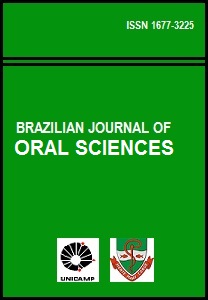Abstract
Aim: The purpose of the present study was to evaluate the antimicrobial activity of 0.2%, 1%, and 2% chlorhexidine in root canals instrumented with the ProTaper Universal™ system. Methods: Fifty human mandibular premolar teeth were infected with a mixture of Candida albicans, Pseudomonas aeruginosa, Enterococcus faecalis and Staphylococcus aureus. The specimens were randomly divided into 5 groups with 10 root canals according to the irrigant used. All root canals were instrumented with the ProTaper Universal™ system. Assessment of the antimicrobial action of the irrigant was performed before, during, and after instrumentation. Data were analyzed statistically by Chi-squared test and the Fisher exact test at 5% significance level. Results: The 0.2% chlorhexidine solution was ineffective against all test microorganisms. The 1% chlorhexidine solution was effective in eliminating P. aeruginosa and C. albicans after the use of the F1 and F3 instruments, respectively. The 2% chlorhexidine solution was effective at killing S. aureus, P. aeruginosa and C. albicans after the use of the S1 instrument. There were statistically significant differences (p<0.05) between the concentrations of chlorhexidine and the instruments used. Conclusions: The 0.2% chlorhexidine solution in combination with rotary instrumentation was ineffective against all test microorganisms. The 1% chlorhexidine solution was ineffective against S. aureus and E. faecalis. The 2% chlorhexidine solution was not sufficient to inactivate E. faecalis.The Brazilian Journal of Oral Sciences uses the Creative Commons license (CC), thus preserving the integrity of the articles in an open access environment.
Downloads
Download data is not yet available.

